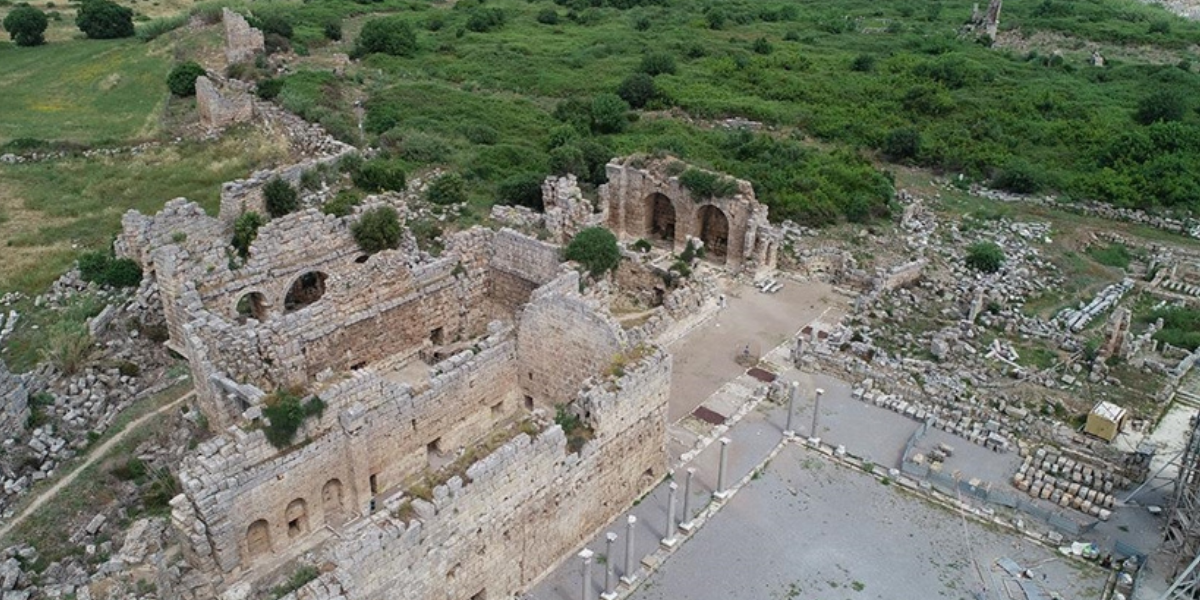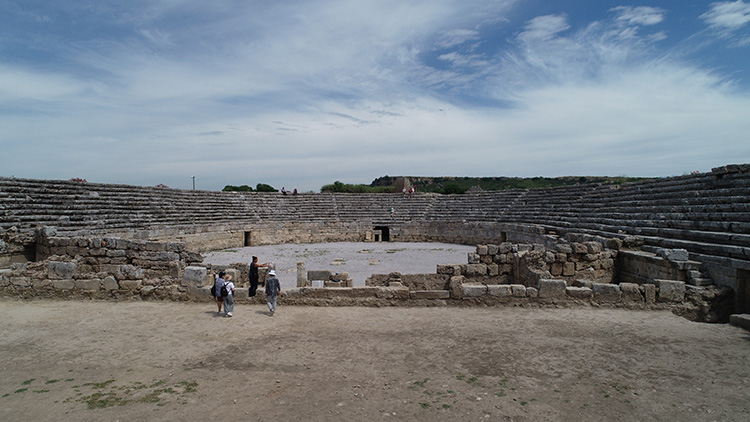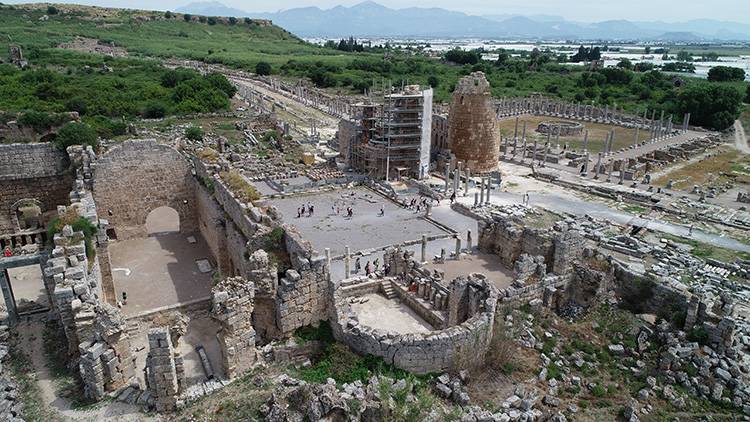
Work on the arena of the 30 thousand-seat stadium in the ancient city of Perge has been completed
Work on the arena of the 30 thousand-seat stadium of the ancient city of Perge, one of the most organized Roman cities in Anatolia, has been completed.
The ancient city of Perge, located 18 km east of Antalya, within the borders of Aksu district, was once the capital of the Pamphylia Region.
During the Hellenistic period, the city was considered one of the richest and most beautiful cities in the ancient world. It was also the hometown of the Greek mathematician Apollonius of Perges.
Perge was known as Parha during the Hittite period.
📣 Our WhatsApp channel is now LIVE! Stay up-to-date with the latest news and updates, just click here to follow us on WhatsApp and never miss a thing!!
Prof. Dr. Sedef Çokay Kepçe, Head of Excavation of the Ancient City of Perge, Istanbul University Faculty of Letters, Department of Archaeology, told AA correspondent that Perge, where traces of human traces have been found since the fifth millennium BC, is dated to the ancient Roman period with its streets, rows of shops, fountains, baths and schools.

Kepçe stated that the city attracted attention with its magnificent structures and sculptures filling the Antalya Museum and that excavations have been continuing in different areas for 78 years.
Stating that one of the most important areas of work in recent years is the 30 thousand-seat stadium area, Kepçe said, “Excavation work had started in the arena under the leadership of the Museum before. We were able to complete the excavations this year. We uncovered the 5 thousand-seat arena, which is quite properly seen in the stadium. Now we will gradually expand the excavations to other areas of the stadium. The stadium sits on vaults. We want to empty the soil filling here and bring the stadium to the city as a new structure.”
Stating that they came across findings that shed light on history in the area, Kepçe said:
“Especially in the center of the arena, square shaped stone blocks with pits in them are remarkable. The blocks are also encountered from time to time in theaters. We think that these are blocks used for battles with wild animals. Our friends are preparing an article on this. When it is completed, we will introduce it to the scientific world. At the same time, we aim to continue excavations in the area inside the stadium structure. We plan to complete the stadium within this year.”
You may also like
- A 1700-year-old statue of Pan unearthed during the excavations at Polyeuktos in İstanbul
- The granary was found in the ancient city of Sebaste, founded by the first Roman emperor Augustus
- Donalar Kale Kapı Rock Tomb or Donalar Rock Tomb
- Theater emerges as works continue in ancient city of Perinthos
- Urartian King Argishti’s bronze shield revealed the name of an unknown country
- The religious center of Lycia, the ancient city of Letoon
- Who were the Luwians?
- A new study brings a fresh perspective on the Anatolian origin of the Indo-European languages
- Perhaps the oldest thermal treatment center in the world, which has been in continuous use for 2000 years -Basilica Therma Roman Bath or King’s Daughter-
- The largest synagogue of the ancient world, located in the ancient city of Sardis, is being restored












Leave a Reply